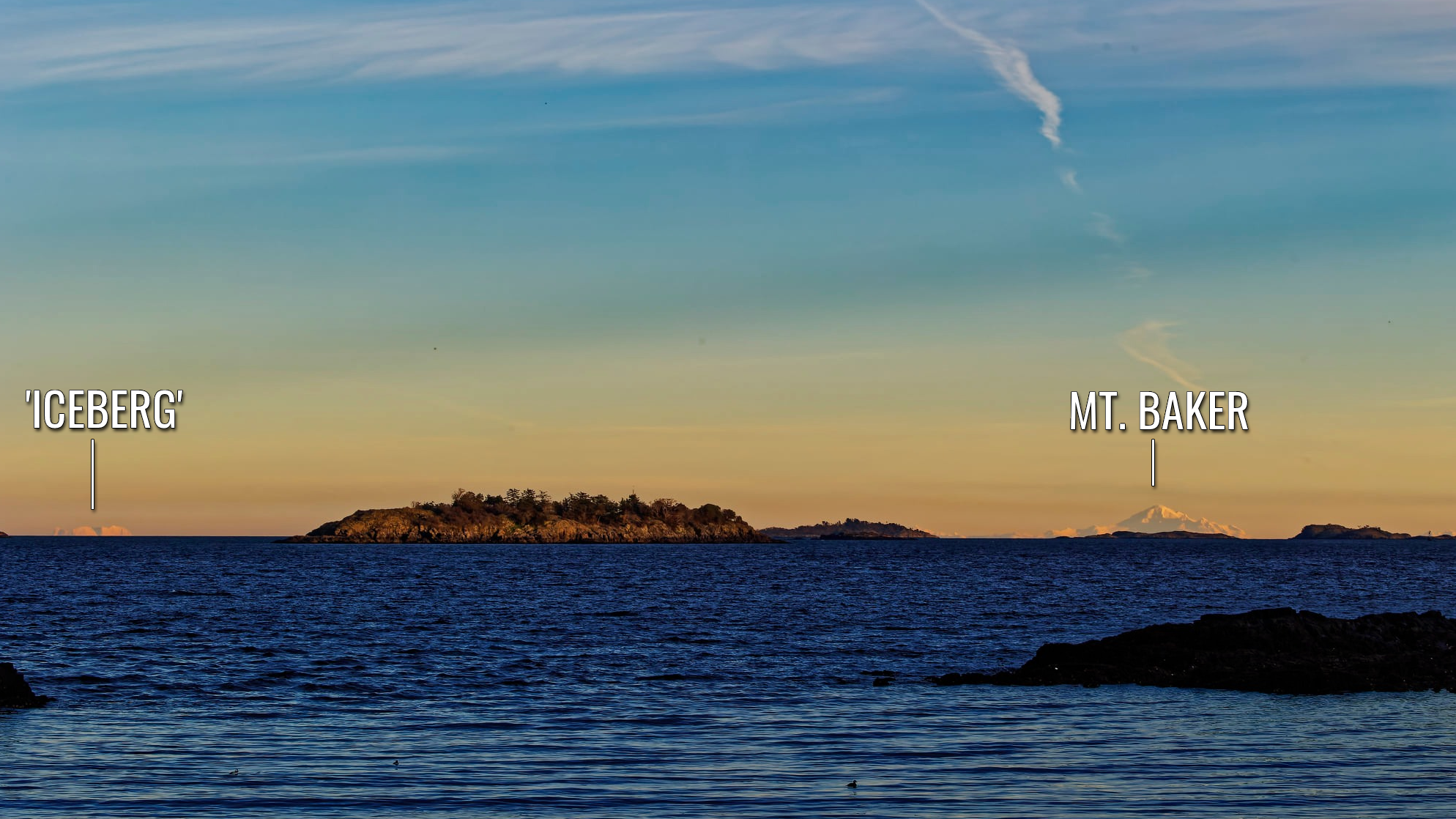
‘It was so convincing, so real:’ floating Salish Sea ‘iceberg’ stumps Nanoose photographer
NANAIMO — Simone Engels was left in disbelief while taking pictures of a recent evening sunset.
She was at a beach in Moorecroft Regional Park in Nanoose Bay on Sunday, Jan. 9, taking snapshots of the changing sky and a distant Mt. Baker when an unusual object seemingly floating in the water caught her attention.
“When I looked through the camera, I couldn’t believe my eyes because what I was looking at was an iceberg,” Engels told NanaimoNewsNOW. “I looked again then put my camera down…then I looked through it again and thought this was really strange.”
An unusually sharp image of a white mass sat on the water line in the distance but with no-one else around to confirm what she saw, she decided to snap some photos to post online.




